P2X7-mediated alteration of membrane fluidity is associated with the late stages of age-related macular degeneration
- PMID: 36001279
- PMCID: PMC9832188
- DOI: 10.1007/s11302-022-09894-y
P2X7-mediated alteration of membrane fluidity is associated with the late stages of age-related macular degeneration
Abstract
We have shown deficits in monocyte phagocytosis from patients with age-related macular degeneration (AMD). Cell membrane fluidity is known to affect phagocytic capacity and leucocyte functionality more generally. Therefore, we examined membrane fluidity of peripheral blood leucocytes in human patients with AMD and in the P2X7 null mouse model of AMD using flow cytometry with a fluorescent probe for fluidity, TMA-DPH. The results showed that membrane fluidity was decreased in all leucocyte types of late AMD relative to healthy controls (HC) including monocytes, neutrophils and lymphocytes but this was not apparent in earlier stages of AMD. Further analysis of factors contributing to membrane fluidity indicated that pre-treatment of monocytes and lymphocytes with ATP greatly increased membrane fluidity in humans and mice. Evidence from P2X7 null mice and P2X7 antagonists confirmed that these ATP-driven increases in membrane fluidity were mediated by P2X7 but were not associated with the classic P2X7 functions of pore formation or phagocytosis. Analysis of P2X7 expression indicated that receptor levels were elevated in classic monocytes of late AMD patients, further suggesting the P2X7 may contribute to altered plasma membrane properties. Our findings identified a novel biological function of P2X7 in modulating membrane fluidity of leucocytes and demonstrated reduced membrane fluidity in cellular changes associated with the late stage of AMD.
Keywords: ATP; Age-related macular degeneration; Membrane fluidity; Monocyte; P2X7; TMA-DPH.
© 2022. The Author(s), under exclusive licence to Springer Nature B.V.
Conflict of interest statement
The authors declare no competing interests.
Figures
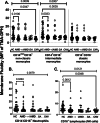

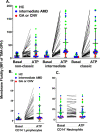
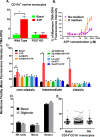
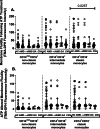
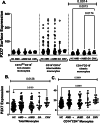
References
Publication types
MeSH terms
Substances
LinkOut - more resources
Full Text Sources
Medical

